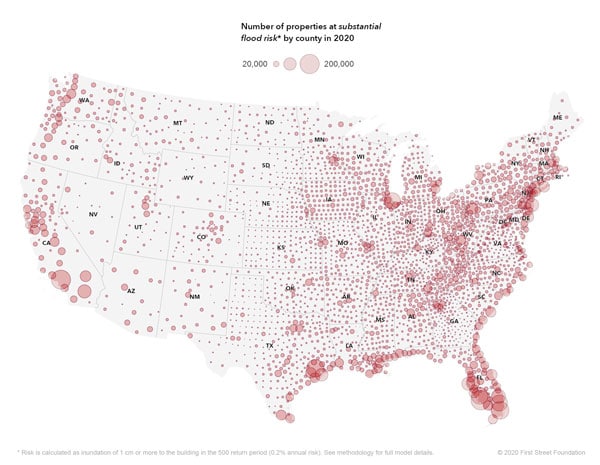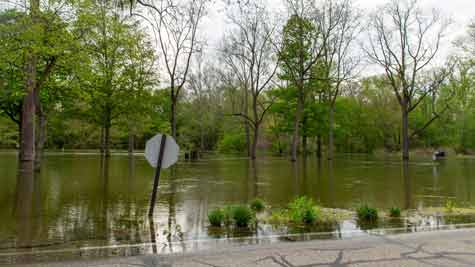Avoiding conflict with a river

Communities need to be building smarter. Research released this summer found that nationwide, 14.8 million properties are vulnerable to flooding. You can explore the data and find your home’s flood factor at floodfactor.com. This finding opposes the 8.7 million identified by the Federal Emergency Management Agency—the agency responsible for drawing the country’s floodplain maps. The analysis added changes in rainfall, smaller streams and sea level rise into the equation, and the results nearly double the number of properties that should be considering flood risk. Michigan has had several consecutive years of extremely high water resulting in surface flooding and high flow events on the river. Conditions are changing in a way that brings rivers in conflict with the built environment. Now more than ever we need to revisit where and how we build.
Addressing our stock of aging dams and improving our approach to floodplain management are two key solutions. The breach of the Edenville and Sanford dams on the Tittabawassee River in May illustrated how a perfect storm can cause massive damage.
Removing or repairing dams
Without action to remove obsolete dams and investment to repair those that still serve a practical function, dam failures will become more common. Much of the state’s stock of 2,600 dams have exceeded their intended lifespan. Obsolete designs meant to withstand past conditions are quickly becoming inadequate for current and future climatic conditions.
Across the country, experts understand that removing dams we no longer need is the best way to keep people safe, improve water quality, restore critical wildlife habitat, and eliminate ongoing costs of dam maintenance and repair. In Michigan, a growing number of dams have been successfully removed including three on the Boardman river in Traverse City and one on the Mill Creek tributary of the Huron river in Dexter. It concerns me that some media coverage of the Tittabawassee dam failures frames the argument as wildlife versus people. This is a dangerous and false narrative. Addressing dams can and should improve the hhttps://www.hrwc.org/what-we-do/programs/dams-and-impoundments-program/ealth of a river and protect citizens from catastrophe.
Respecting floodplains

On land, communities need to revisit floodplain maps and understand the implications of more water on buildings, homes, and other infrastructure. Expanding floodplains mean more homeowners will need flood insurance at a time when insurance costs are increasing. People of color are disproportionately impacted by increased flood risk as many historically segregated neighborhoods are located in low lying areas. Residential flooding can result in mold and property damage, leaving residents with unique health and economic burdens.
At the local level, we need more policies that reduce vulnerabilities to flooding. Green Oak Township limits development within 100 feet any tributary, dramatically reducing potential harm from flooding. The City of Ann Arbor has proposed a flood damage prevention ordinance to create a new zoning overlay that includes properties in or near the floodplain. The ordinance calls for no new development within the floodplain and elevating buildings that are in the “flood fringe” where flooding is possible.
Land protection millages in the City of Ann Arbor, Ann Arbor Township, Washtenaw County, and Scio and Webster Townships fund the purchase of natural areas so they can continue to absorb rainfall and reduce flood risk. If you see a land protection millage come up on your ballot, I encourage you to support it.
As I watch how more rainfall and larger, stronger storm events hit our landscapes, I am reminded of something I learned back in graduate school; the best way to avoid conflict with a river is to let it do its thing and stay out of its way. This includes flooding. While, in today’s society that is an impossibility in most places, there is something to be said for aspiring to that goal.
This blog post was originally published September 1st in the Huron River Report, Fall 2020.



